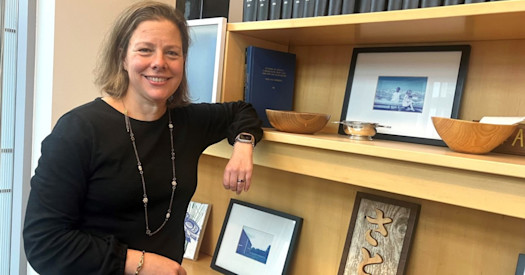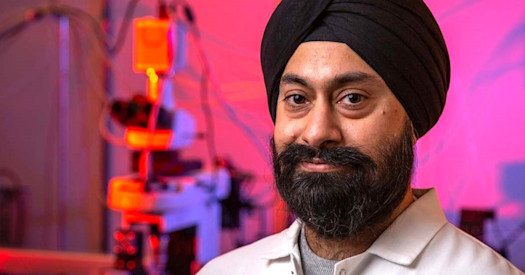
“We have the means to prevent cancer and to detect it early. But we’re not fully using the resources we have.”
Dr. Thomas Payne, Professor, UW Department of Medicine; Adjunct Professor, Biomedical Informatics and Medical Education
The lifetime risk for breast cancer is 13 percent in the U.S. and, in 2021, the American Cancer Society estimates nearly 300,000 new cases will be diagnosed. More than 40,000 women are expected to die this year from breast cancer. Death rates have been steady among women under age 50 since 2007; those rates have continued to drop in women over 50. These decreases are thought to be the result of treatment advances and earlier detection through screening. But according to three members of the Brotman Baty Institute for Precision Medicine (BBI), there is a third – and often ignored – way to lower those rates even further: using electronic health records (EHRs) to identify women with a risk of having a genetic predisposition to breast cancer. “We know that we under-use the resources of medical genetics,” said Dr. Thomas Payne, whose primary care practice at UW Medicine includes studying electronic health records. “We underuse genetic testing for predisposition of cancer. We also know that because women who end up having breast cancer often have the disease associated variants in the BRCA 1 or 2, or other genes, but that genetic risk was never detected.” Risk assessment tools in primary care have shown moderate to high accuracy in identifying patients for referral to cancer genetics specialists for consideration of genetic testing. But such tools usually require additional time for physicians to acquire personal and family history information. Regrettably, the complete story of a patient’s risk for inherited cancer often does not exist in a single location. It is fragmented across entries created by many clinicians, insurance companies, and other sources over several decades in many locations and formats, and from different institutions. “The challenge is that most family practitioners are seeing a patient every 15 minutes, and they are addressing the problems the patient has today,” said Dr. Fuki Hisama, a UW Medicine professor of medical genetics and program director of the UW Medical Genetics Residency Program. “To go off on the world of genetics and say to a patient – ‘Hey, let’s see what we can prevent for you 20 years down the line?’ – it’s just not the way a lot of physicians were trained to think.” Hisama and Payne, with a one-year, $85,000 BBI “Catalytic Collaboration Grant,” teamed up with Dr. Lue Ping Zhao, a professor in the Public Health Sciences Division at the Fred Hutchison Cancer Research Center, to quantify risk factors for inherited breast and ovarian cancer in EHRs. They also wanted to determine how many women meet national guidelines for referral to a cancer genetics specialist. Collaborating for the first time on this pilot study, they hired six medical students to review UW Medicine inpatient and outpatient records and to identify breast and ovarian cancer risk-factors among notes, reports, orders, outside records, and scanned documents. The review also included UW Medicine health system records, documents from other institutions, handwritten questionnaires completed by patients, and records viewable from other organizations. Among the 299 randomly selected women receiving care in the UW Medicine system, the students identified 24 women (8 percent) who met guidelines for genetic risk evaluation for breast or ovarian cancer by the National Comprehensive Cancer Network (NCCN). NCCN is a not-for-profit alliance of 31 leading cancer centers in the U.S. working toward improving and facilitating quality, effective, efficient, and accessible cancer care. Of those 24 women, 12 had no record of referral for genetic testing. In addition, the study examined the EHRs of 56 women seen in the UW Medicine Adult Genetics Clinic. Following genetics evaluations, the number of relatives with cancer diagnoses doubled from 121 to 235; 17 of 56 (30 percent) of family histories changed in a clinically meaningful way. Of those 56 women referred to the genetics clinic, 45 (80 percent) met NCCN guidelines for testing, 40 women underwent genetic testing, and 9 of 40 (23 percent) tested positive for a pathogenic or likely pathogenic variant. “This study of 56 women quantitatively demonstrates the value of a genetics clinic visit by improved identification of key family history components, and provides examples of how genetics professionals improve care,” according a paper the three BBI members wrote, “Value of a genetics clinic evaluation in identifying women at risk for hereditary breast-ovarian cancer syndrome,” published in April in the Journal of Genetic Counseling. The paper is one of three emanating from the EHR study. Zhao recognizes the study underscoring the need to help ensure EHRs deliver value in clinical settings. “This pilot is useful for identifying women at high risk for breast and ovarian cancer and begins to close the gap from research discoveries, commonly from genetic epidemiologic studies to bedside services,” said Zhao. “We must close that gap, showing that EHRs are an important source of genetic risks, and that future genetic data should be included into EHRs.” This BBI project demonstrates the potential for EHR data extraction to identify women at increased risk, but it also calls for improved methods to search them. In future work, the team plans to develop an automated approach using image processing and natural language processing tools to search the EHR and alert the primary care physician and patient to lead to more timely and effective healthcare. Another BBI member, Dr. Gail Jarvik, who leads the UW Medicine Division of Medical Genetics, is hopeful the use of EHRs for identifying potential hereditary connections to diseases will increase in the future. “I expect we will see improved tools for physicians not only taking, or having the patient self-enter, a family history, but deciding if that family history gives an indication for genetic evaluation,” said Jarvik, who did not work on this study. “I'd love to see the opportunity to share genetic test results with at-risk family members through the electronic health record.” Payne underscored the importance of the BBI grant that led to the study. “The BBI funding was important on so many levels,” Payne said. “This has been a great example of a truly ‘catalytic collaboration.’ I would not otherwise have had the opportunity to work with doctors Zhao and Hisama. Moreover, the medical students benefitted greatly from the experience researching the EHRs, as well as presenting their findings at local and national meetings.”


